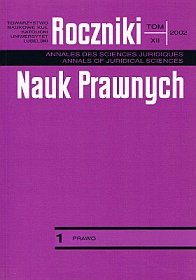Speaking about the Problem of the Composition of the Supreme Court in Poland and Lithuania from 16th to 18th Centuries
Abstract
The composition of the Nobleman's Supreme Court was changing a lot from its foundation in 1578 to the fall of the Commonwealth (Rzeczpospolita). The number of judges, from the foundation of the Court to the beginning of the 18th century was almost doubled. 27 lay and 6 religious judges had a seat in the Court in its second year of function, by the reform in the year 1726 there were already 50 lay and 6 religious judges.
On the minor scale, the same occurrence could be observed in the Lithuanian Court founded in 1581. There were 46 lay and 2 religious judges at the beginning of its function. But at the end of the 18th century there were 49 lay and 4 religious judges in the Lithuanian Court.
Both in Poland and in Lithuania the judges were elected in special judges meeting among nobility (szlachta) living in that province every year at the same time. The Chapter elected the religious judges. The judges were elected only for a year. They could be re-elected in four years time in Poland and in two years time in Lithuania. During the whole period of their work in Court juridical education was not required. Some attempts to change this situation were made at the end of the 18th century, but they failed due to the fall of the country. The cases were investigated at the head of the president elected among the lay people, and the religious elected their own president.
Up to the reforms of the Stanislawski period Courts functioned in the full composition without segregation into specialized houses.
Copyright (c) 2002 Roczniki Nauk Prawnych

This work is licensed under a Creative Commons Attribution-NonCommercial-NoDerivatives 4.0 International License.


